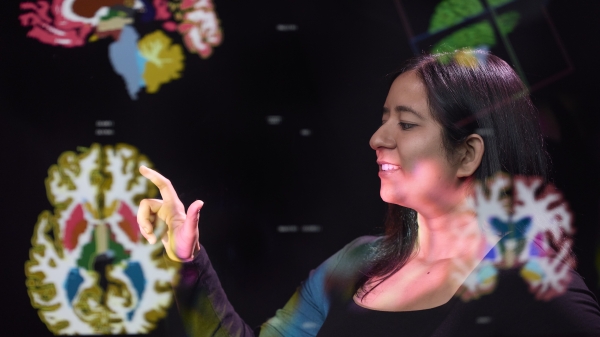Translating addiction research into real-world interventions

Since the launch of the Substance Use and Addiction Translational Research Network in December 2020, the group has built a rich and diverse community bridging academic researchers and community agencies throughout Arizona, all working in prevention, treatment and policy related to substance use disorders. Photo by Marcos Paulo Prado/Unsplash
One of the challenges in combating substance use disorders (SUDs), from nicotine addiction to the opioid epidemic, is the disconnect between the worlds of academic research and community practice. Agencies working to make a difference within local communities often feel they cannot access or benefit from cutting-edge research.
These community agencies also have no direct way to influence the research agenda, despite having valuable insight into the questions for which answers are most urgently needed and an informed perspective on what approaches are more or less likely to work in real-world settings.
A new effort from Arizona State University is hoping to change that, while also providing new, state-of-the-art training for the fight against problems linked to addiction.
Since the launch of the Substance Use and Addiction Translational Research Network (SATRN) in December 2020, the group has built a rich and diverse community bridging academic researchers and community agencies throughout Arizona, all working in prevention, treatment and policy related to SUDs. SATRN’s mission is to foster communication and collaboration among its affiliates, and to support new research that will have a meaningful impact on individual and societal problems related to addiction.
Leading the SATRN effort is Michelle “Lani” Shiota, an associate professor of psychology at ASU. Her own research investigates positive emotions, emotion regulation, emotion in close relationships and emotion-related mechanisms of behavior change.
“SATRN is an amazing community, and I’m grateful for all our members who bring diverse knowledge and lived experience to the table,” said Shiota. “So much goodwill and resources are being devoted to issues around substance use disorder. All of us working in this space share a passion for finding ways to improve people’s health and well-being, but it’s a complicated set of intertwined problems, and we may come at them from very different perspectives. Each individual holds one puzzle piece-worth of knowledge. If we can put all those pieces together, we should be able to see the bigger picture that emerges, identify key gaps in the picture where more research is needed, and find the best points of leverage for improving people’s lives.”
A particularly important partner in this work is SATRN Steering Committee Member Matt Meier, also director of the Master of Science in Addiction Psychology program and co-director of clinical training at the ASU Clinical Psychology Center. Meier is a pivotal figure in multiple efforts related to SUDs across ASU and leads a $1.3 million HRSA grant training providers in addiction treatment and management. This new program aims to expand access to care to more people in need, with particular emphasis on telehealth and cultural competence in working with Native American populations. Meier and Shiota are also working to develop a new program providing online continuing education training that will share cutting-edge science directly with the behavioral health community.
Another central SATRN initiative is its Glen J. Swette Seed Grant program, which funds innovative, early-stage research led by academic and community partners in collaboration.
Examples include a project tracking the effects of cannabis legalization in Arizona, led by Madeline Meier of ASU, Anne Boustead of the University of Arizona and the MATFORCE coalition; as well as a new intervention aimed at preventing substance use among children of incarcerated parents, led by ASU’s Liza Hita and Helena Valenzuela of the Arizona Department of Corrections.
Another seed grant-funded project, led by ASU’s Raminta Daniulaityte and Haley Coles of Sonoran Prevention Works, has studied the potential of drug-checking services to detect fentanyl in street drugs, potentially saving lives.
SATRN also hosts a lunchtime brown-bag talk series each semester of the academic year; working groups on topics of shared interest including harm reduction, youth messaging surrounding marijuana, neonatal abstinence syndrome and new parents, and dissemination, implementation and adaptation across cultural contexts; and an annual meeting where members can network, share knowledge and form new collaborations.
“Our hope is that through enhanced communication and collaboration, research on addiction and substance use disorders can move at a faster pace and ask the right questions, and that policy is able to follow,” said Shiota.
To keep up to date on SATRN’s activities, email SATRN Administrative Associate Camille Avila to be added to SATRN’s newsletter and email lists.
More Science and technology

New NIH-funded program will train ASU students for the future of AI-powered medicine
The medical sector is increasingly exploring the use of artificial intelligence, or AI, to make health care more affordable and…

Cosmic clues: Metal-poor regions unveil potential method for galaxy growth
For decades, astronomers have analyzed data from space and ground telescopes to learn more about galaxies in the universe.…

Indigenous geneticists build unprecedented research community at ASU
When Krystal Tsosie (Diné) was an undergraduate at Arizona State University, there were no Indigenous faculty she could look to…